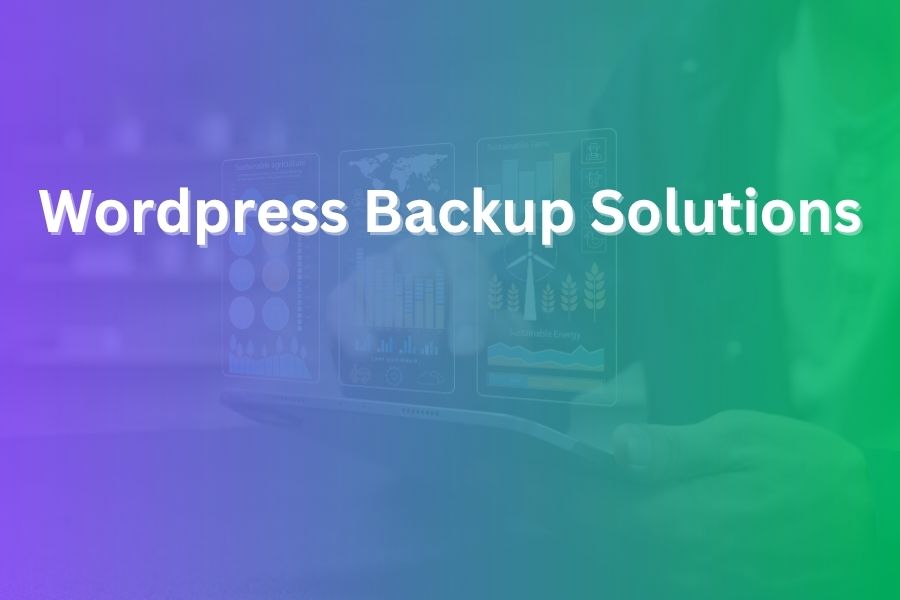
Maintaining your WordPress site without frequent and reliable backups is like walking a tightrope without a safety net. With your site contributing to your brand, traffic, and revenue, a sudden crash or hack can set you back hours—sometimes days of recovery time.
You need a backup strategy that’s easy to manage, fits your traffic and content volume, and gives you peace of mind. In this article you’ll learn how to choose, implement, and maintain strong WordPress backup solutions so you’ll never lose your site unexpectedly.
Why backups are non-negotiable
If you assume your hosting provider or WordPress core will handle all backups for you, you’re taking a big risk. The reality is your site stores a mix of files, media uploads, database entries, plugins, and themes—all of which make your site unique.
Without a recent copy, a server crash, malware attack or user error could cost you big. In fact, given that WordPress powers around 43% of all websites, it is a common target and a single glitch or conflict can stop your site in its tracks. Having backups translates into faster recovery, less downtime, and better protection for your brand and SEO.
What exactly should you back up?
You want backups to include:
- Your WordPress database (posts, pages, comments, settings)
- Your wp-content folder (uploads/media, themes, plugins)
- Core WordPress files and configuration files (wp-config.php, .htaccess)
If you omit any part, your restore might restore only part of your site, leaving files missing or plugins misconfigured. A complete site snapshot covers everything.
Types of backup solutions
- Manual backups – Via FTP & phpMyAdmin you download files and export your DB. Feels safe but it’s labor-intensive and easy to forget.
- Plugin-based solutions – You install a WordPress plugin that automates backups, stores them off-site, and often gives you one-click restores.
- Managed/host provided backups – Some hosts back up your site—but you still want control and verification of that backup. Many savvy site owners use a plugin in addition to host backups for full control.
- Incremental vs full backups – A full backup contains the entire site each time. Incremental only backs up what’s changed since last time; it saves space and reduces server load. If you run an active site (e-commerce, frequent content), incremental becomes essential.
Key features to look for in a backup solution
When evaluating backup solutions make sure they include:
- Automatic scheduling of backups (daily, hourly)
- Off-site storage (cloud, separate server, not just your hosting account)
- One-click restore or wizard-based restore process
- Support for large sites (if you have heavy media) and multisite networks
- Incremental backup support (for busy sites)
- Multiple storage options (Google Drive, OneDrive, Dropbox, S3)
- Notifications and monitoring to alert you if backups fail
- Encryption of backup archives or secure storage
- Ability to exclude unnecessary files/folders (optional)
These features together help ensure your backups are complete, safe, and usable when required.
Choosing the right backup solution for your site size and needs
If your site is a simple blog that updates weekly, your risk is lower than a high-traffic store with dozens of transactions per hour. For lighter sites a daily full-site backup stored off-site might suffice.
For a busy e-commerce site you’ll want real-time or hourly incremental backups. Choose your plan accordingly. Also evaluate how much storage your backups will consume and whether your hosting environment can handle running backups without slowing your site.
Popular reliable backup plugins you can trust
Here are some established plugins (you’ll want to evaluate pricing/feature tiers):
- A plugin that backs up full sites and supports migrations.
- A plugin focusing on remote storage and auto scheduling.
- A plugin built for budget environments with essential remote storage.
Each has a free version plus premium tiers, so you can test before committing.
Best practices: how to build a robust backup strategy
- Set up a backup schedule aligned with your site’s change frequency: full backup monthly, incremental daily, database backup hourly for dynamic sites.
- Store backups in at least two locations: one off-site (cloud) and one local/archive so you’re safe if cloud or host fails.
- Regularly test restores in a staging environment. Having backups is great—but if they fail to restore you’re still in trouble.
- Monitor your backup jobs. A backup that hasn’t run or a smaller-than-usual file size may signal an issue.
- Before updating WordPress core/plugins/themes or migrating hosts, always create a fresh backup. One step goes wrong and you’ll want a rollback point.
- Retain multiple versions of backups (e.g., last 30 days) so you can revert to a clean point if malware or corruption occurred unnoticed.
- Document your recovery process so if you’re not around, someone else can restore your site quickly.
Common mistakes to avoid
- Relying solely on your host’s automated backup without checks.
- Storing backups on the same server as your live site—if the server fails, you lose both.
- Neglecting to test your restore process so you discover the backup archive is broken only when you desperately need it.
- Ignoring backup failure alerts or storage quotas and assuming “backup just happens.”
- Using full backups too frequently on large sites without incremental backup support—this can slow your site during backup windows and consume high storage.
How to restore a WordPress site from a backup
- Set your site to maintenance mode to avoid new data loss.
- Upload the backup archive or plugin restore package.
- Import the database (or let plugin handle it).
- Restore files, plugins, themes, uploads, and configuration.
- Clear caches and verify everything works: pages load, login works, forms work, settings persist.
- If your site was hacked, change all passwords, update security plugins, and patch vulnerabilities before going live.
The ROI of backup solutions
Think of backups as insurance. According to a recent survey, businesses lose an average of five hours per month from downtime and one in five lose over $2,500 monthly due to hosting or site issues.
With a strong backup/recovery plan you can reduce that risk dramatically. So the cost you pay for a premium backup plugin or service is a fraction compared to the potential loss of traffic, reputation, and revenue.
Checklist: Setting up your WordPress backup solution
- Decide backup frequency (based on site activity).
- Choose and install your backup plugin or service.
- Configure off-site storage destinations.
- Set retention policy (how many backups to keep).
- Set up notification alerts for failures.
- Run a test restore in staging.
- Before any major updates or changes, create a fresh manual backup.
- At least monthly, review your backups, storage usage, and restore responsiveness.
Conclusion
You’ve built your WordPress site with hard work, content, and investment. Don’t leave its future to chance with no backup plan. Choose a backup solution that matches your site’s size and activity level, store your backups off-site, test your restores, and automate your workflow.
When you do, you’ll be prepared for whatever server crash, update-conflict, or hack comes your way—and you’ll recover with confidence and zero panic.

